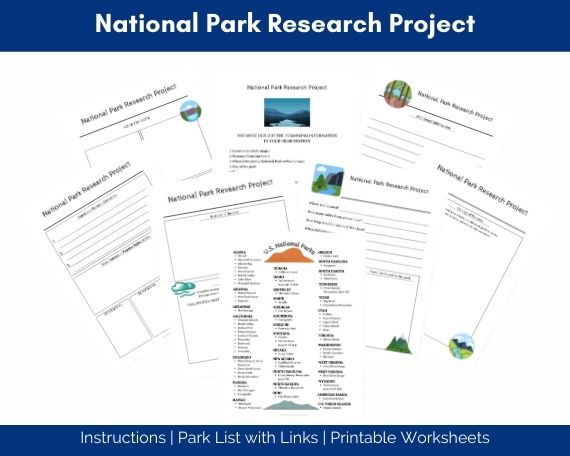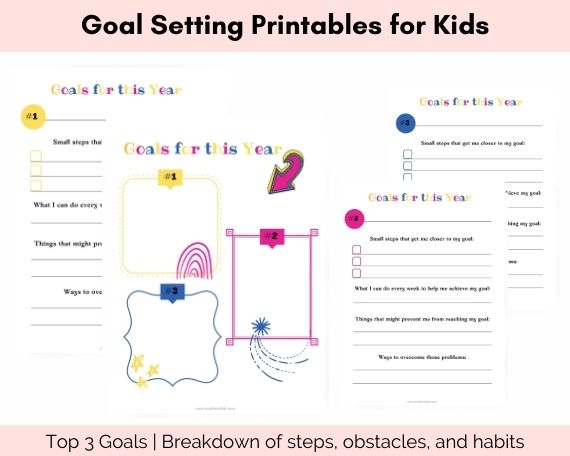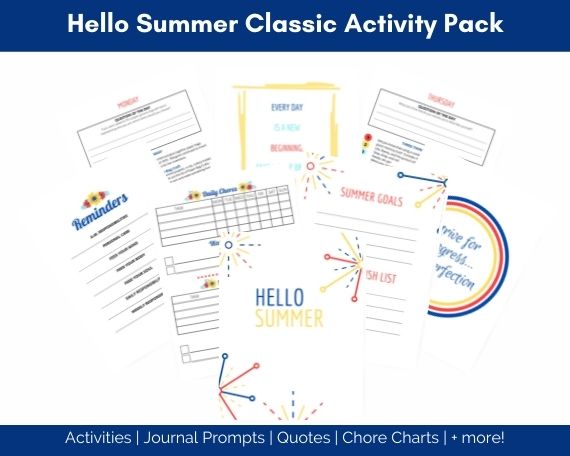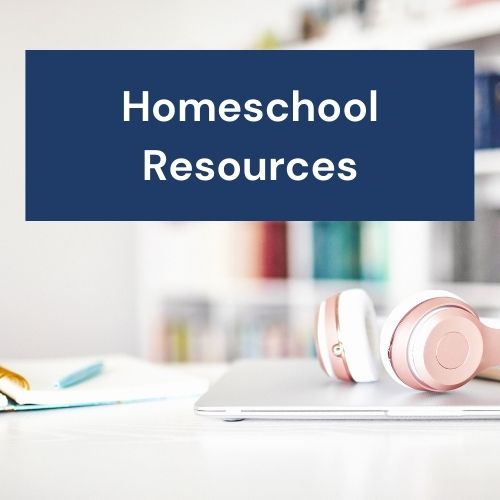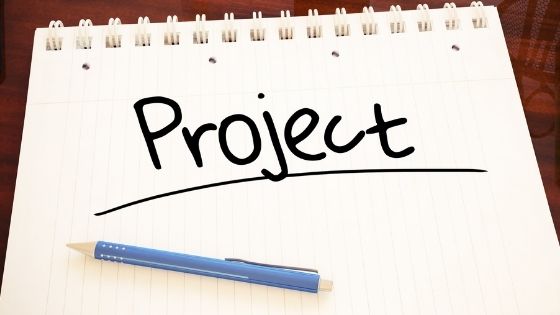Are you trying to figure out where in the world to start with homeschool planning? There is a lot to consider, but I’m going to walk you through a big-picture look at how to plan your homeschool year.
Before we dive in, there are a few very important points you should hear up front.
First, there is no “right way” to homeschool.
Second, you can change as you go along.
And third, no matter how you plan, build in flexibility.
The planning you do in advance is helpful to have as a framework, but you will find yourself making changes as the year goes on. You should give yourself permission to scrap plans that aren’t working well for your family and change things up to better fit what you and your kids need.
How to Plan Your Homeschool Year
This article will walk you through the following seven steps to planning your homeschool year.
- Learn Your State Homeschooling Regulations
- Self-Evaluation
- Choosing Curriculum
- Setting a Schedule or Routine
- Lesson Planning and Record Keeping
- Practical Details
- Adding Fun Extras
Download a free printable homeschool planning guide at the end of the article
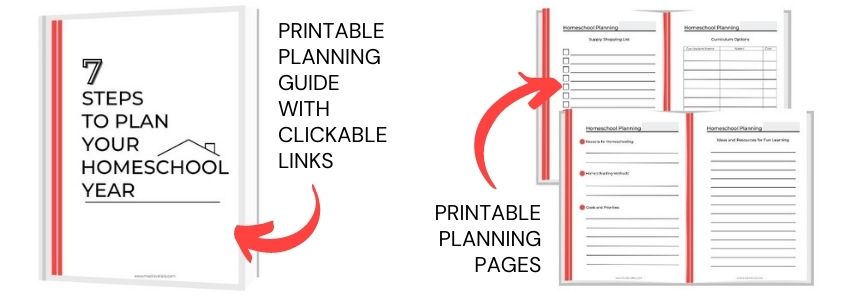
(Disclosure: As an Amazon Associate I earn from qualifying purchases. This means that if you click a link and make a purchase, I may receive a small commission at no additional cost to you. I only recommend products I use and love or would love to use! For full disclosure details, click here.)
Learn Your State Homeschooling Regulations
Homeschooling is legal in every state in the U.S., but specific requirements related to days or hours of learning, subject matter, testing, and other things differ from state to state.
A good place to start is the Home School Legal Defense Association (HSLDA) links to each state’s requirements.
This step is crucial. In most states, there are specific requirements for notifying your school district or other educational organization of your intent to homeschool. You should begin your planning with clear information regarding the regulations you will need to understand and follow.
Once you determine what your state requires, you’ll be in a great position to explore the many homeschooling options available to you.
Self-Evaluation
Before jumping into any specific planning, it’s important to think about why you are homeschooling, what you envision your homeschool experience to be, and set goals or priorities for your homeschool year.
What Kind of Homeschooler Are You?
Ready for some jargon? Unschooling, classical, school-at-home, Montessori, online, Charlotte Mason, eclectic, project-based-learning, interest-led learning, gameschooling. There are a lot of homeschooling models and ideas, which can be overwhelming.
If you are just starting out, I suggest reading Homeschooling: Which Model is Right for You? published on The Best Schools website. This article provides a very articulate overview of seven major types of homeschooling, their benefits and drawbacks, and resource links to learn more.
In this step, consider the following questions:
- How much time do you have to spend homeschooling?
- Do you feel a strong affinity for one specific style of homeschooling over another?
- How much structure do you need to feel comfortable?
- Do you want an open-and-go curriculum or would you prefer a more piecemeal approach?
- Would you and your kids prefer online classes with live teachers or graded work?
- Are you teaching multiple ages? Do you intend to teach them together for certain subjects?
- Are there homeschool co-ops or groups in your area you want to join?
- Will your child attend any classes at public school?
Set Goals and Priorities
Now that you’ve answered some questions about how you’ll approach homeschooling, it’s time to set goals and determine priorities for your year.
Here are a few questions to ask when thinking about your goals and priorities. I like to set general goals and priorities prior to the beginning of the school year, and then revisit specific goals on a monthly basis.
- particular academic topics you want to cover
- areas of interest you want to explore
- specific books you want to read
- projects you want to do
- standards your kids need to meet
- field trips
- Will you prioritize a specific schedule?
- Do kids have knowledge gaps that need to be filled in?
- Is there an area you or your kids need to work on being consistent?
- Are there things you did last year that you want to change?
- Are there things that worked well last year that you want to continue?
- ways to check in and communicate: morning meeting, checklist, weekly check in?
- areas you want to see personal growth or character development
Goal and Priority Setting Example
Since I think it’s helpful to see something specific, here’s how I might go about setting goals and priorities for a school year.
- “School” in some form for at least 180 days
- Institute a morning meeting to talk through any questions, “office hours” for the day, and work on combined lessons.
- Go on at least one field trip per month
- Extra focus on mastering typing skills
Set goals that will be helpful to you. For example, I could have listed as a goal: complete the math curriculums for each child. Technically, that is a goal for my school year. But I don’t really need to set that as a goal because I will do that regardless of whether I write it down or not.
I personally like to write down goals in areas that I need a little reminding or accountability for something that I want to prioritize.
Read: Monthly Checklist for Homeschooling Moms


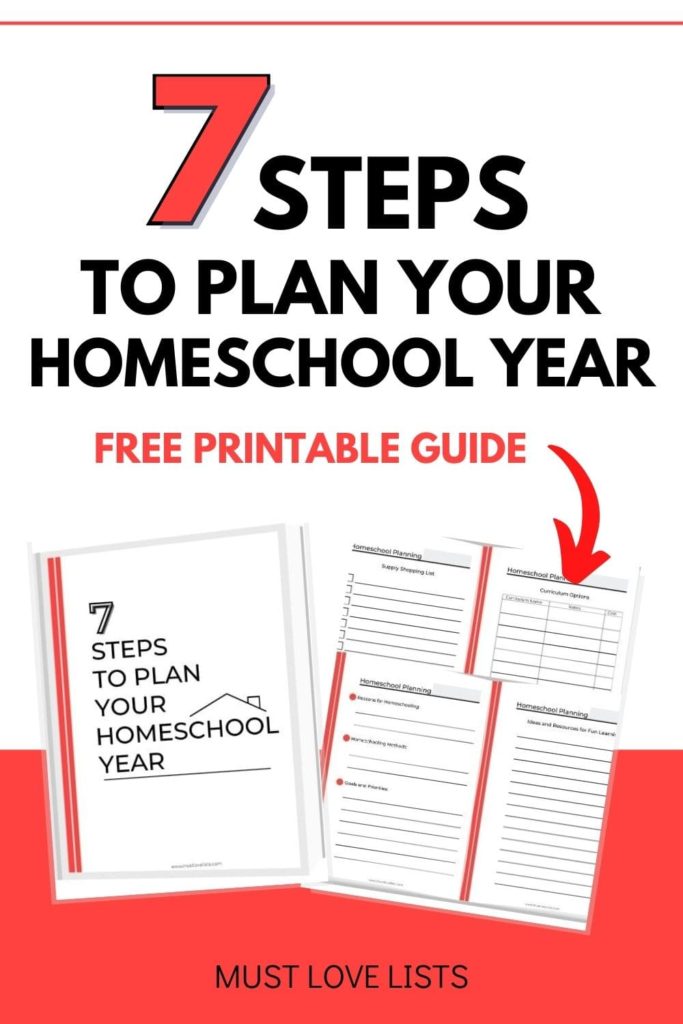

Choosing Curriculum
You can absolutely homeschool without buying expensive curriculum, or even any curriculum. However, most homeschoolers use at least some prepared materials to teach their children.
Choosing curriculum is a big part of planning your homeschool year. There are a few ways to approach this.
- Choose an all-in-one or “boxed” curriculum that includes textbooks, workbooks, and other material.
- Choose an all-in-one online curriculum that covers all subjects and perhaps offers live or video teaching, tutoring, and grading.
- Follow the standard school subject matter taught in public schools and source specific curriculum to cover that.
- Decide on your own what you want your child to learn and source curriculum specific to that.
One amazing resource you should bookmark for curriculum information is Cathy Duffy Reviews. Her book, How to Choose Homeschool Curriculum, provides a valuable breakdown of curriculum strengths and weaknesses and her website offers a wealth of information to help you sort through options.
All-in-One Curriculum
An all-in-one curriculum is sometimes called a boxed curriculum or multi-subject curriculum. Typically, it includes the core subjects, which would be math, language arts, social studies, and science.
Examples of all-in-one curriculum:
- Abeka
- Alpha Omega
- American School (also online program)
- BJU Press (also online program)
- BookShark
- Gather ‘Round Homeschool
- The Good and the Beautiful
- MasterBooks
- My Father’s World
- Oak Meadow
- Sonlight
Examples of online all-in-one curriculum:
- American School (also print option)
- BJU Press (also print option)
- Bridgeway Academy
- Easy Peasy All-in-One (FREE!)
- Homeschool Pro
- Miacademy
- Power Homeschool
- Schoolhouse Teachers
- Study.com
- Time4Learning
- Veritas Press
Specific Subject Curricula
If you wish to make individual curriculum choices to suit your child’s needs, you may be interested in what a typical progression of study entails. There are a number of resources available to determine this information.
Grade Level Standards
- Scope and sequence information directly from the curriculum provider
- Your state’s education website for grade level standards (search YOUR STATE education standards or YOUR STATE grade level standards)
- Your public school district website for specific grade-level curriculum
Core Subjects
Generally speaking, you’ll want to include the core subjects: math, language arts, social studies, and science. However, there is a lot of space for creativity and unique approaches if you are going the choose-your-own-adventure route instead of a boxed, all-in-one curriculum.
You have flexibility to adjust the grade level of each subject to best meet your child’s needs, and mix-and-match types of learning. The possibilities truly are endless, but I’ll give a couple of examples below to give you an idea of what this might look like:
Scenario 1
Math: textbook/workbook plus video recorded lessons
Language Arts: read books your child loves and purchase writing/vocabulary/comprehension activities to accompany them from Teachers Pay Teachers
Science: unit studies based on your child’s interest in specific topics
Social Studies: history using a variety of books, documentaries, YouTube videos, and museums, requiring your child to complete a year-end slideshow about an area of interest to them
Scenario 2
Math: Khan Academy online
Language Arts: read books from a grade level recommended reading list + comprehension questions downloaded from an online source such as Teachers Pay Teachers, writing curriculum that includes teacher’s manual, weekly grammar curriculum
Science: specific science curriculum (biology, physics, chemistry) with lab materials for at-home use
Social Studies: unit studies on a variety of topics of interest (e.g. specific countries, time periods, or economic systems)
Obviously, you can switch your curriculum up in a myriad of ways to cover your core subjects.
Additional Subjects
In addition to math, language arts, science, and social studies, you will probably want your child to learn a variety of other information, although not necessarily every year.
Here are specific additional subjects to consider when planning your homeschool year:
- Art
- Astronomy
- Biology
- Chemistry
- Computer Science/Technology
- Creative Writing
- Earth Science
- Foreign Language
- World Geography
- Government/Economics
- Health/Nutrition
- Oceanography
- Physics
- U.S. History
- World History
- Home Economics
- Keyboarding (typing)
- Music
- Physical Education
- Speech/Public Speaking
- Theater/Drama
This list just skims the top of subjects your child may wish to study. In younger grades, you can dive deep into unit studies on specific topics of interest.
For middle and high school students, the elective options for homeschoolers are as broad as their interests. Your child may learn graphic design, culinary arts, welding, money management, or survival skills. They may participate in choir, band, sports, or 4-H.
Making Curriculum Choices
As you consider your curriculum options, make a list of ones that appeal to you and a few notes about why you like it. Then, ask for advice from homeschoolers who have older students. If you don’t know any homeschoolers, there are Facebook groups with plenty of people willing to give you their two cents! Especially if you have older students, ask their opinion about which is appealing to them. Narrow it down to a few choices and eventually, you just need to pick one.
Setting a Schedule or Routine
Your choice of curriculum may influence your schedule to some degree. If you’re reading this article, you probably want some kind of schedule, even if it’s a loose one.
Of course, any live classes, either in-person or online, will have set times. Beyond that, there are a number of considerations when deciding how you want to schedule your homeschool year. Look through the list below for some ideas to consider when deciding on a schedule or routine that works for you.
- Year-round
- Traditional 10-month schedule with summer off
- Follow the public school holiday schedule
- Choose your own holidays/days off
- Every subject every day
- Block schedule
- 4-day weeks
- Assign work daily
- Assign work for the week and allow kids to manage time independently
- Daily or weekly combined learning with multiple ages
- Daily time requirements per subject or in total
- Weekly time requirements per subject or in total
- Start time
- Scheduled breaks
- “Office hours” for mom
- Independent learning time
- Built in catch up days
- Scheduled planning time
Every schedule will look slightly different, and your schedule may need to adjust throughout the year, but I find it helpful to have a general routine of which days we do “school” and clear expectations of what is expected of each child on those days.
Lesson Planning and Record Keeping
Now we move on to the nitty-gritty planning. One word of caution about planning from a die-hard planner. BE FLEXIBLE. No matter how much you try to come up with the perfect plan or system, life will happen. Write in pencil. Leave extra time.
The first step is to consider how much you actually want to plan your day-to-day learning. You may have an open-and-go curriculum and just work through it without a lot of additional planning.
If you’re more spontaneous and go-with-the-flow, you may simply jot down what you cover each day or week rather than planning ahead as much.
Another simple option is to add up the number of weeks in your school year and divide your curriculum up into that many segments, loosely planning to cover that amount of material each week.
I am firmly in the “plan everything as far in advance as possible” camp, so I will talk briefly about more detailed planning options.
Homeschool Lesson Planners
There are numerous options for a physical lesson planner. The benefits of a physical planner include the visual reminder sitting on your desk, familiarity of a calendar-like planner, and the variety of styles that allow you to find something just right for you.
- Any wall or desk calendar with big boxes
- Spiral bound notebook (make daily or weekly lists)
- Traditional teacher planner
- Homeschool lesson planner (specifically created for homeschoolers)
Homeschool Lesson Planners
Digital Lesson Planners
If you’re comfortable with online technology and like the flexibility it offers, there are quite a few options for planning your homeschool year online.
You can keep it basic and use a simple spreadsheet or Google calendar. Or, try a project management tool like Asana or Trello for creative lesson planning and assigning lessons as tasks.
Here are a few ideas to consider for digital or online lesson planning:
- Online calendar system (shared Google calendar)
- Spreadsheet
- Asana
- Trello
- Homeschool Planet
- Planboard from Chalk
- Planbook
- Common Curriculum
However you choose to plan your homeschool year, remember the most important piece of advice: BE FLEXIBLE. Allow for skipping lessons/review if your student understands the material well. On the other hand, allow for additional time when needed to solidify learning.
I personally like to use online planning tools because of the flexibility they offer to make changes. As much as I love a pretty planner, I choose a digital planner for homeschool planning.
If you plan a week in advance, it’s probably not such a big deal. But if you like to plan an entire semester or year’s worth of learning in some amount of detail, you may find that a digital planner is the best choice.
Most of the digital planning tools allow for attaching files, some integrate with Google classroom. They provide ways to bump your entire schedule forward if you miss a lesson, copy or move lessons easily. Some include a gradebook and templates to simplify lesson planning.
Record Keeping
Along with lesson planning, you need to decide what records you will keep. Some of that will be determined by your state requirements, but even if your state does not require any formal record keeping, you may wish to keep records for yourself.
Do you need or want to keep records of the following:
- Attendance
- Grades (at least for high school transcript purposes)
- Specific subjects or topics covered
- Test results
We just talked about lesson planners, and there are many that make it easy to track attendance or grades.
Records of work completed can be compiled by storing paper copies of worksheets, tests, and projects in a binder. Digital copies of projects and papers, along with screenshots of online work can be stored as well.
As part of your schedule planning, choose a time to grade and store work. Weekly seems reasonable, but at least monthly, or it will become too overwhelming.
Practical Details
Once you’ve chosen your curriculum, created a schedule, and set up a system for lesson planning and record keeping, you’ve really done the hard stuff. But you should also take time to think about a few practical details to plan ahead for your homeschool year.
First, we’ll talk about supplies. You do not necessarily need all the items I list below, but the lists given will help you think about what you might find useful.
Organize Teacher Supplies
Think about what you will need or want to use on a regular basis. Here are a few ideas to consider:
- Calendar
- Whiteboard (dry erase markers, eraser, magnets)
- Bulletin board and push pins
- Chalkboard and chalk
- Inbox for kids to put work in
- Mailboxes for kids
- Bookshelves
- Book bins
- Desk
- File cabinet and file folders
- Three-hole punch
- Clock
- Post-it notes
- Binders to keep printed reference material (standards, rubrics, etc.)
- Notebooks
- General office supplies & supply organizer (tape, stapler, pens, paper clips, etc.)
- Educational posters or helpful reference material for display (maps, charts, etc.)
Some of My Favorite Supplies
Organize Supplies for Kids
You definitely don’t need a dedicated homeschool room. Even if you have a lovely homeschool space, your kids will probably want to work at the kitchen table or on the couch sometimes! However, there are supplies you may want to consider as you plan your homeschool year.
- Student planner
- Binders and dividers
- Notebooks
- Paper in various colors and sizes
- Pencil sharpener
- Calculator
- Dictionary and thesaurus
- Computer
- Headphones
- Charging station
- Clipboards
- Dry erase boards or pockets
- General school supplies (pencils, erasers, ruler, scissors, etc.)
- Art supplies (crayons, sketchbooks, colored pencils, markers, paints & brushes, etc.)
Create a Paper File System
Depending on your individual choices for homeschooling, you may need more or less space dedicated to a paper file system. If your student is taking mostly online classes with work graded by those teachers, you probably won’t need as much space as if you are downloading most of your child’s work from Teachers Pay Teachers.
Spend some time thinking about whether you want to have files for each subject, each child, each month, or some other organization system that makes sense for you.
I’ll share my personal filing system as an example. I have the following types of files set up to drop in printed material that I may want to use during the school year.
- General homeschool planning
- Book lists
- Holidays (file for each major holiday)
- Monthly files: I use these to store bucket list ideas, craft ideas, or anything I intend to cover in a specific month
- Subject files (Algebra, U.S. History, Spelling, etc.): I use these to store reference material or worksheets that I may want to use
- Grade level files (3rd grade, 6th grade, high school, etc.): I use these to store more general, non-subject specific, information I may want to refer to when planning
- Individual student files: these are great to keep general student records like personality or learning style information, or information about courses they might be interested in
- Unit study files
Create a Digital File System
Without a good system for storing all those downloads and bookmarks, you’ll soon be overwhelmed with information and unable to find and access what you already have.
I recommend thinking about your digital files the same way you do paper files. Create a file folder system that makes sense to you and stick with it.
To start, in your Documents folder on your computer, create a folder labeled Homeschool. Everything related to homeschooling should live in this folder.
Because I want to view my file folders in a specific order, I name them beginning with a number, rather than let them be automatically ordered alphabetically.
Naming File Folders Example
01.Homeschool Planning
02.General Resources
03.Grade Level Resources
04.Subject Area Resources
05.Unit Study Resources
06.Completed
Naming my folders this way means they will always show up in this order, rather than have my “completed” folder at the top of the list. I try to think through what makes sense for me. For example, unit studies could be included in my subject area folder, but since many unit studies tend to include elements of language arts, science, history, and even math all together, I prefer to keep them in a separate folder.
Organize Digital Bookmarks
There is a whole world of digital organization and ways you can choose to order your online world, but one area that has been useful to me as a homeschool mom is to have a system for organizing websites and resources that I’ve bookmarked in my browser.
I generally model my bookmarking system after my file naming system. This means that I create bookmark folders for homeschool planning, grade level resources, subject area resources, and so on. Clear labeling makes it easier to find what I’m looking for.
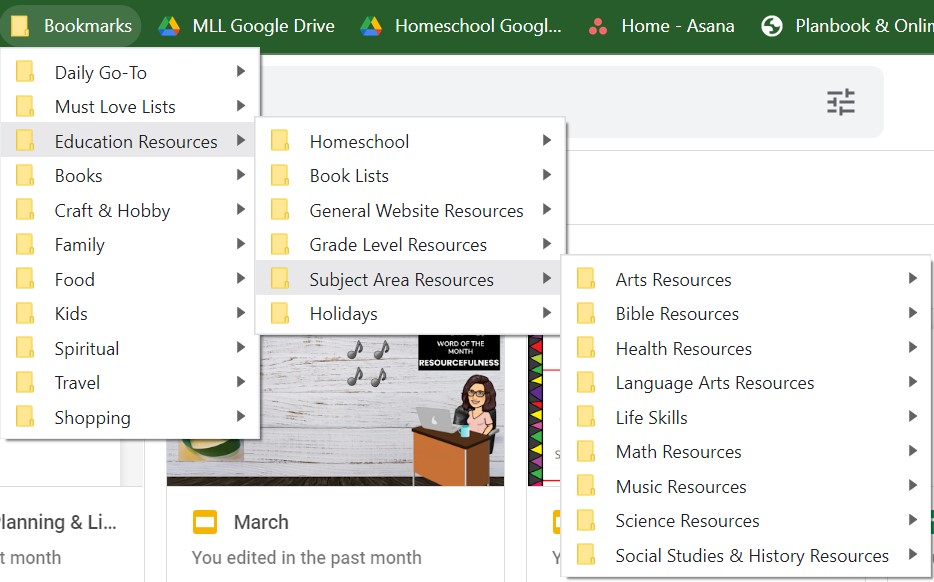

One thing I need to be better about is culling bookmarks regularly. I would recommend taking an hour or so once a quarter, or at least a couple of times a year, to delete irrelevant bookmarks and add or change folders as needed.
It may be helpful to keep a folder at the top of your bookmark list labeled “Current,” “Up Next,” or something along those lines. When you’re browsing and bookmarking things you want to come back to investigate, put it in this folder to keep it on your radar. Of course, this only works if you actually set a time to go through this folder regularly and delete or “file” the bookmarks in their proper place!
Adding Fun Extras
If you’ve made it this far, you are set up for a well-planned year! Now we get to the fun stuff. The final thing to do when planning your homeschool year is look for ways to add engaging activities your kids will enjoy.
I don’t start here, because honestly, to me this is where the options are endless and it would be easy to lose hours and hours of time in rabbit holes. I prefer to have some loose structure, so it is important for me to take the time to plan my base curriculum, create a schedule, and set up organized systems.
Here is a taste of the fun extras you might consider including throughout your homeschool year. All of these can be used to add to, deepen, and encourage learning in new ways.
- Movies
- Documentaries
- YouTube channels or specific videos
- Video games
- Computer games
- Board games and card games
- Physical games
- Podcasts
- Field trips
- Job shadowing
- Hands-on projects (building a physical object, making a video, taking something apart)
- Travel
- Observe nature
- Include kids in your activities (making a doctor appointment, filling out a form, fixing a faucet)
Read: 36 Documentaries to Use in Your Homeschool


Plan for the Unexpected
We’ve covered a lot of planning. Yet in my opinion, the most important element of your plan is to be prepared for changing your plan. If you hold too tightly to your curriculum, your schedule, your lesson plan, or anything else, you’ll likely make yourself and your kids miserable.
I love to plan and I really love it when a plan comes together perfectly. But give yourself permission to ditch the plan. If the curriculum starts to feel stifling, take a break or try something different. Maybe you unexpectedly get an opportunity to travel or someone gets sick. It’s okay to ignore your schedule. When you see how much your child is interested in a particular time period, animal, or country, feel free to scrap the lesson plan for the rest of the week (or month) and learn more about that topic.
You and your kids will experience less conflict and stress if you hold your well-formed plans loosely.
Visit my homeschool resources page for monthly unit study ideas, projects, and homeschool planning help!
How to Plan Your Homeschool Year
Here’s a reminder of the seven steps to plan your homeschool year.
- Learn Your State Regulations
- Self-Evaluation
- Choosing Curriculum
- Setting a Schedule or Routine
- Lesson Planning and Record Keeping
- Practical Details
- Adding Fun Extras
Each of these steps contributes to feeling confident about your ability to homeschool and leads to less chaos.
As a Christian homeschooler, I include prayer in each step along the way. Most of us have days we just don’t know if we can do this thing we set out to do. How reassuring to know that we don’t do this alone, or in our own strength.
My strength is sufficient for you, for my power is made perfect in weakness.
2 Corinthians 12:9
Now, take a deep breath, maybe have a cup of tea, and start planning your homeschool year. You can do it!
To help you do it, I’ve created a homeschool planning guide covering all this information and including printable planning pages. Click the image below to download the PDF file, and don’t forget to join my mailing list for more helpful resources to organize home life and homeschool.






Join my mailing list to receive updates when new printable resources are added to the library, plus tips and encouragement for your organized homeschool journey.


















